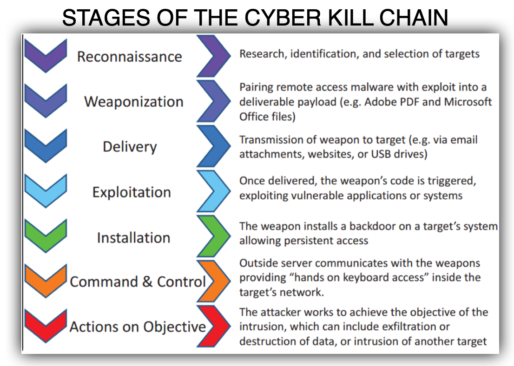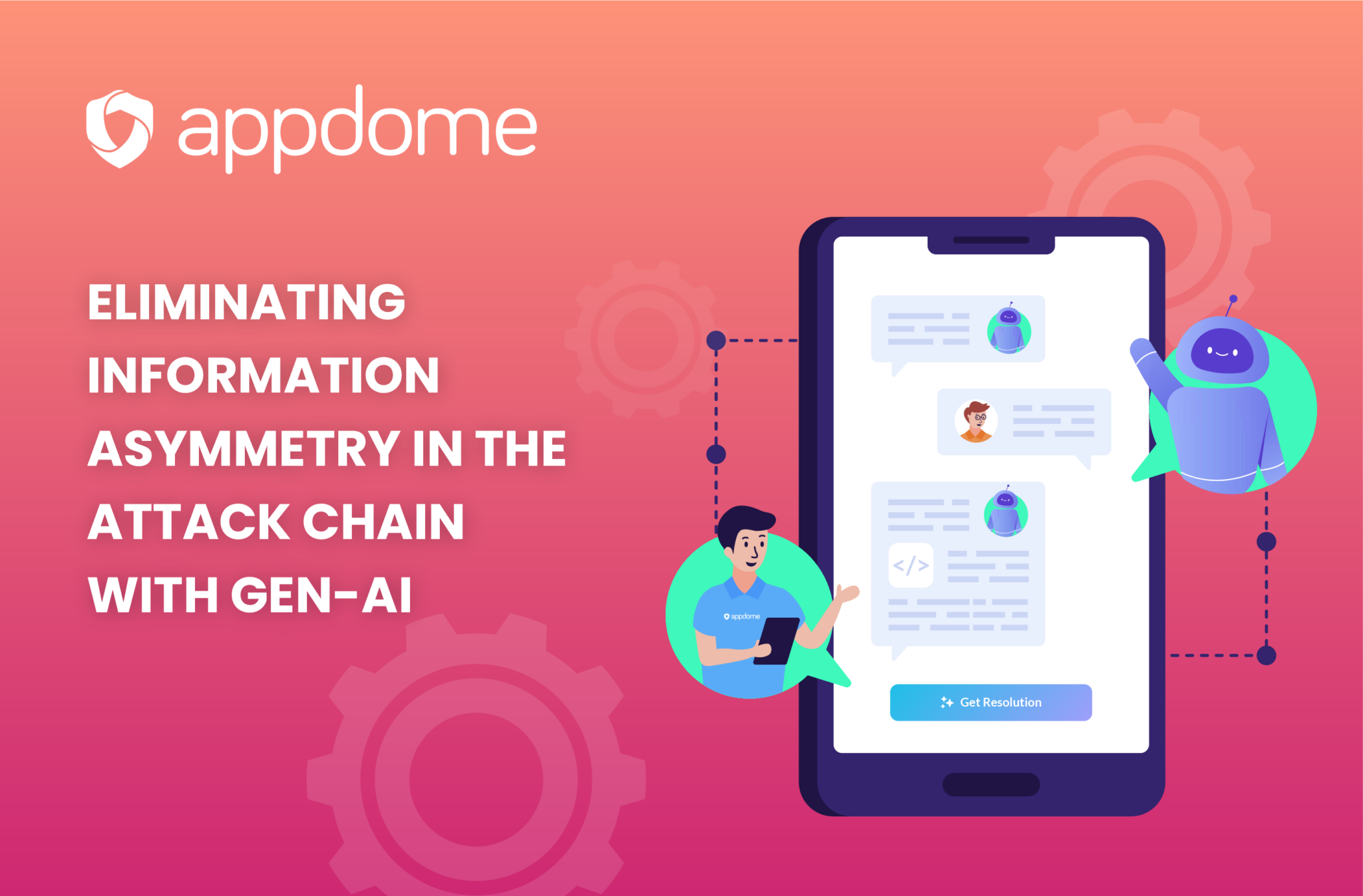Understanding Information Asymmetry in the Attack Chain
In today’s rapidly evolving mobile app security landscape, attackers have a significant information advantage over app makers. This information asymmetry in cybersecurity refers to the unequal distribution of information between attackers and defenders. Attackers meticulously plan their strategies against mobile apps, often leveraging advanced tools to evade detection, operating with a level of stealth that leaves defenders scrambling to catch up, or even worse, unaware of their malicious actions.
This disparity in information creates a reactive environment for mobile brands (defenders), where they are perpetually many steps behind attackers. Attackers often have a significant information advantage, exploiting gaps in knowledge, communication, and specific elements of the app to compromise the environment of their target.
Appdome Threat Resolution Center combines Appdome’s global threat intelligence network, in-app attack telemetry, and GenAI into a single query-response tool that helps mobile brands and enterprises support mobile app users facing attacks by eliminating information asymmetry. Using Threat Resolution Center, mobile support teams can identify mobile threats and attacks on Android & iOS devices and guide users through the process of removing the on-device threats quickly and efficiently, as explained in this blog post by one of Appdome’s creators.
In this post I’ll explain the concept of information asymmetry in the context of the “cyber kill chain” and also demonstrate the importance of eliminating information asymmetry in order to provide threat resolution efficiently.
What is the Cyber Kill Chain?
The cyber kill chain, also known as they cyber attack chain, encompasses the stages an attacker follows to achieve their objectives. It includes reconnaissance, weaponization, delivery, exploitation, installation, command and control, and actions on objectives.

At each stage of the kill chain, attackers gather information, refine their tactics, and adapt their methods to avoid detection. Defenders, on the other hand, must identify and respond to threats at any point in this chain, often with limited visibility into the attackers’ activities. At every stage of the kill chain, attackers tend to augment and grow their information advantage. For example, during the reconnaissance stage, attackers gather information about their target to identify weaknesses, for example, using social engineering tactics or reverse engineering mobile apps to learn critical details about their victims as well as the apps they are using. Then perhaps they might lure the user to a fake website or a malware-embedded fake version of the app, which might use an overlay attack technique to trick the user into revealing sensitive information. Other times the malware might trick the user to enable powerful features or grant app permissions to the attacker inadvertently.
Keep in mind, this malicious activity typically occurs in stealth, completely concealed by the attacker using a myriad of sophisticated tools and techniques, such as Frida, Magisk, code injection, method hooking, and many others. And at the time of the attack against the user, neither the user nor the app maker has the slightest clue about what is going on, they literally are starting from square one, and with little to no information about the attack. The creator of the attack, on the other hand, knows a ton of information about the app and the user, hence “information asymmetry.”
At each stage of the attack chain, attackers have the advantage of planning and executing their actions with precision, stealth and time on their side. Defenders, however, must detect and respond to these actions in real-time, often severely lacking in information. This information asymmetry creates a huge advantage for the attacker, and the results are often disastrous for mobile users and brands alike.
Powerful Real-Time Threat Intelligence & Generative AI
This is where Appdome comes in. Appdome Threat Resolution Center enables mobile brands to harness the power of real-time attack intelligence combined with Generative AI to significantly enhance their threat response capabilities, allowing mobile brands to help users resolve threats faster and more efficiently. Threat Resolution Center combines Appdome’s global threat intelligence network, in-app attack telemetry, and GenAI into a single query-response tool that enables mobile support teams to identify and address mobile threats on Android and iOS devices quickly and guide customers to remove or resolve the threats on the spot.
“Detecting and removing threats and attacks can feel impossibly difficult, let alone doing so with the user experience in mind. Appdome … addresses this challenge by leveraging RAG-optimized GenAI, automatically creating and chaining GenAI prompts to bring threat-specific, context-aware instructions that seek to balance quick threat resolution with a high-quality user experience.”
– Katie Norton, Research Manager, DevSecOps, at IDC
When an Appdome-protected mobile app detects an attack or threat, the Appdome Defense Framework inside the app generates a context-specific ThreatCode™. This ThreatCode contains detailed data about the threat, attack method, device, OS, and other relevant information. Support personnel at mobile brands and enterprises enter the ThreatCode into Threat Resolution Center, which uses retrieval augmented generation (RAG) to create GenAI prompts, optimizing responses for the specific attack. The resolution response includes instructions on identifying, understanding, finding, and removing the threat from the end user’s device. This system enables true self-service threat response and real-time resolution ensuring that all aspects of the attack are understood, effectively closing the information asymmetry gap.
Imagine a scenario where a mobile user connects to a free coffee shop Wi-Fi and unknowingly downloads malware while trying to access a shopping app. Suddenly, she receives an error message instructing her to call support. First, the error message itself might not be legitimate, as it could very well be malicious, but let’s assume it’s a legitimate message and the support team engages to help the user. Traditional support might take 30-60 minutes to diagnose the issue, often ending with a recommendation to reset the device, causing frustration and doubt.
How Appdome Addresses Information Asymmetry
A key innovation of the Resolution Center is its integration of RAG-based Generative AI, which combines traditional search-based retrieval with generative models to enhance the threat resolution process. This AI uses extensive threat data and contextual information to generate detailed analyses of detected threats, producing specific, actionable response recommendations tailored to each scenario. Threat Resolution Center continuously learns from new threat data and evolving attack patterns, ensuring response recommendations remain current and effective. Additionally, communication between users and support teams is streamlined, allowing for quick threat resolution and improved user experiences.
Now let’s consider the same attack scenario described above, except with Appdome Threat Resolution Center in place. When the threat is detected by Appdome, the mobile user receives an in-app message with a ThreatCode, which the user provides to the mobile brand’s support team. The support team uses Resolution Center to generate step-by-step instructions tailored to the specific device and OS, guiding the user through the process of identifying and removing the malware without needing to reset the phone. This quick and efficient resolution not only enhances the user experience but also maintains customer trust and satisfaction. By addressing information asymmetry and providing a holistic view of the mobile attack chain, Appdome Threat Resolution Center ensures that brands can effectively protect their mobile apps and users, closing the gap between attackers and defenders.
Appdome’s Threat Resolution Center offers a holistic view of the attack chain to address mobile threats effectively. The first step in resolving a mobile threat is understanding it. Using GenAI, Appdome provides detailed descriptions of malware, spyware, or other malicious entities on Android or iOS devices, shedding light on their behavior, infection methods, and potential impacts. The second step is finding the threat. Threat Resolution Center offers tailored step-by-step instructions for identifying malicious entities, making the process accessible even to those with limited technical knowledge. Finally, resolving the threat involves removing or disabling it without resetting the device, providing clear, customized instructions for effective remediation based on the device’s specific characteristics.
By providing contextual threat intelligence tailored to the organization’s mobile app environment, Threat Resolution Center delivers actionable insights specific to the app’s infrastructure, user behavior patterns, and known vulnerabilities, ensuring that security measures are relevant and effective.
Conclusion
In the battle against mobile threats, eliminating information asymmetry is crucial. Appdome’s Threat Resolution Center, powered by GenAI, provides comprehensive visibility and automated responses to bridge the gap between attackers and defenders. By delivering real-time threat monitoring, tailored response recommendations, and enhanced collaboration tools, Appdome empowers organizations to proactively manage and resolve mobile threats. This transformative approach ensures that organizations stay ahead of attackers, turning the reactive nature of traditional security into a proactive and intelligence-driven strategy.
Want to learn more about Appdome Threat Resolution Center? Click the button below to schedule a demo.
Request a Demo





